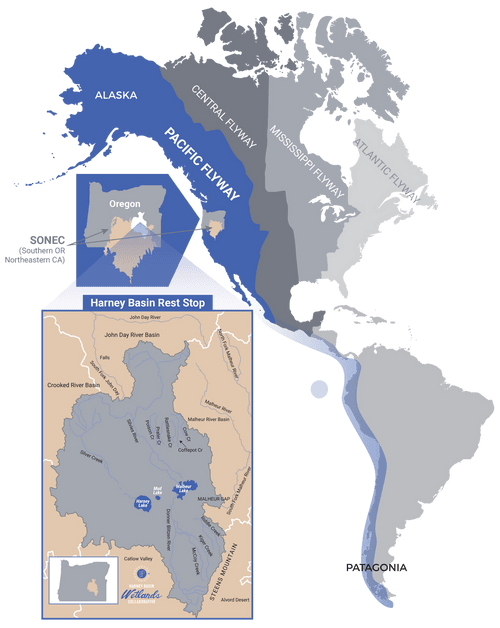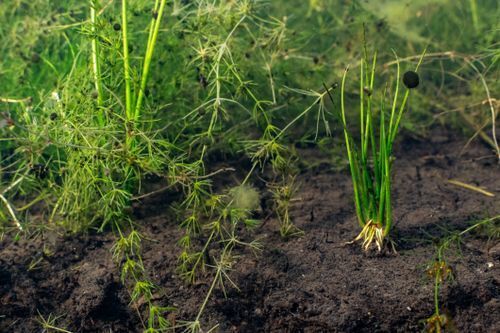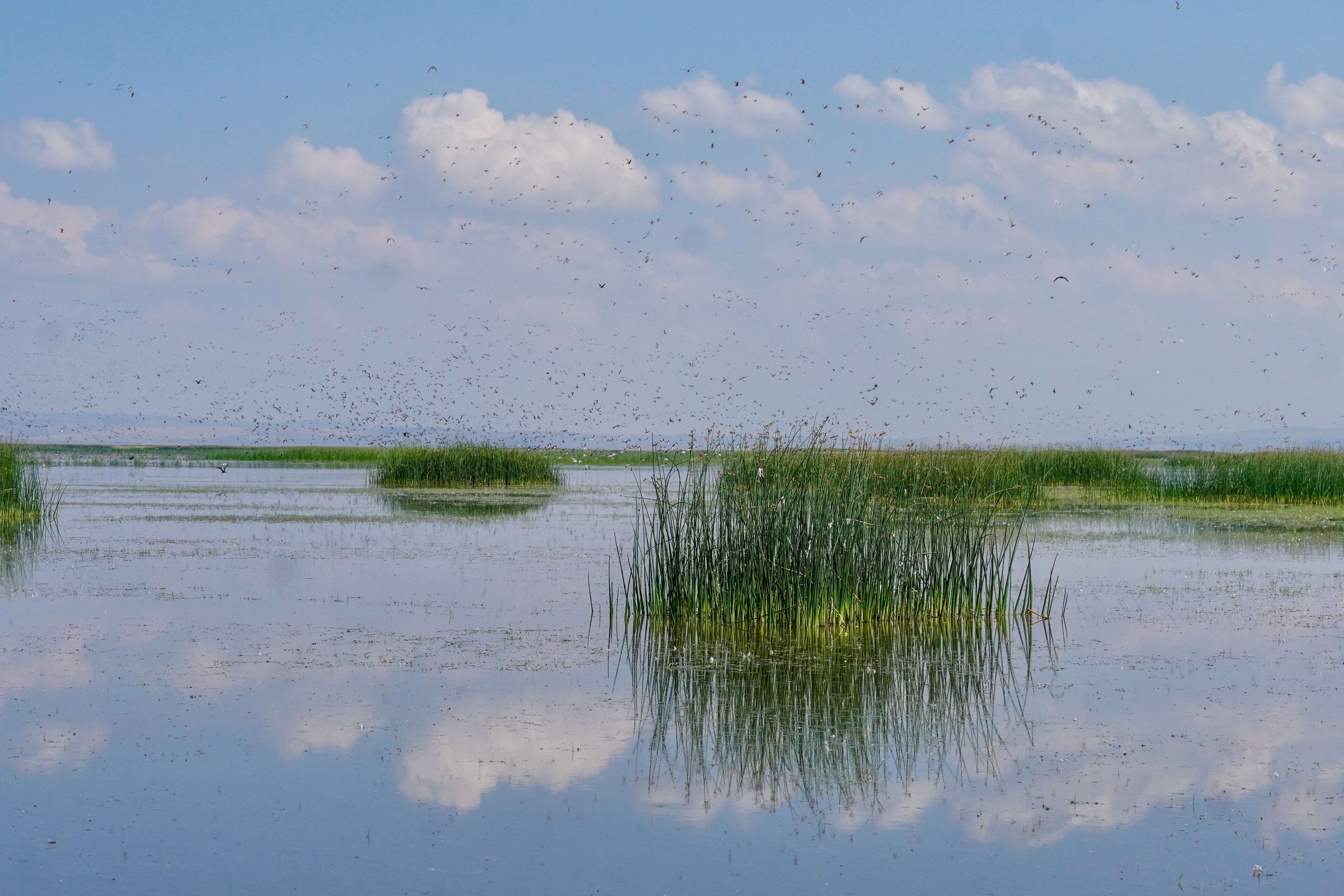A Great Wonder of the West

The United States is split up into four flyways that run north and south. They are the Pacific, Central, Mississippi and Atlantic flyways. The Pacific Flyway stretches from the Arctic to the coast of Mexico and from the Rocky Mountains to the Pacific Ocean. From north to south it is more than 4,000 miles long, and in some places, it is more than 1,000 miles wide. About 70 percent of migratory birds—including over 6 million waterbirds—annually pass through the Southern Oregon Northeast California (SONEC) region of the flyway, which includes the Harney Basin wetlands where large concentrations of birds rest and refuel along the way.
Every year, millions of birds use the Harney Basin as a rest stop on their migratory journeys, both spring and fall, on what is called the Pacific Flyway. An estimated 70 percent of migratory birds—including over 6 million waterbirds—annually pass through the Southern Oregon Northeast California (SONEC) region, which includes the Harney Basin wetlands. Considered one of the most significant flyways in North America, birds come to rest and refuel, using both land and water in all parts of the basin, with large concentrations converging on the Malheur National Wildlife Refuge which encompasses Malheur Lake within its boundaries.
Outside of the Malheur National Wildlife Refuge, private flood irrigated wet meadow ranch lands provide critical habitat for this important bird migration. Traditional flood irrigation practices that spread shallow water across the Harney Basin’s hay meadows every spring create conditions that mimic historical flood regimes that support migrating and breeding birds. These private working lands are one of the cornerstones of Harney County, supporting families and feeding the local economy. In the central part of the Pacific Flyway, which includes the Harney Basin, private land comprises 75% of the wetland habitat. Beyond the importance of the wetlands for migratory birds, the wetlands of the Harney Basin support significant resident populations of waterbirds and other bird species.
But the Basin is Under Stress
Malheur Lake, the largest freshwater marsh in the arid west, has been plagued with an over-abundance of invasive common carp. These non-native fish feed on and uproot the aquatic plants that once made Malheur Lake an immensely productive freshwater marsh for birds and other wildlife. Adding to the decline of aquatic vegetation, powerful persistent winds resuspend sediment making it difficult for aquatic plants to re-root or grow in Malheur Lake because the muddy water keeps sunlight from reaching them. And the problems are not just in Malheur Lake. Outdated and deteriorating irrigation infrastructure is making it increasingly difficult to sustain the traditional method of forage production using wild flood irrigation. Adding to the stress is increasing frequency of drought and increasing evapotranspiration reducing available spring flows for flood irrigation. Lessening snow accumulation patterns affect runoff amounts and timing and in turn duration and availability of water for irrigating meadows. Recent evaluations of climate change on wetlands across the arid west (Donnelly et al., 2020; Haig et al., 2019) have documented declining wetland habitats and raise the concern of loss of flyway connectivity particularly wetlands in snowmelt dominated watersheds like the Harney Basin. In summary, major stresses in the Harney Basin include:
- Invasive common carp in Malheur Lake and tributary streams that disrupt submerged and emerged wetland vegetation establishment.
- Massive turbidity in Malheur Lake prevents light penetration to allow emergent and submergent plant growth.
- Invasive grass species such as reed canary grass that are expanding in flood irrigated wet meadows critical for migratory bird resting and feeding.
- Climate change affecting stream runoff timing, duration and amount of water available for wild flood irrigation and lake levels.
- Outdated and deteriorating irrigation infrastructure is making it increasingly difficult to sustain the traditional method of forage production using wild flood irrigation which in turn impacts availability and quality of bird habitat.
Yet There is Hope

An underwater scene from Malheur Lake summer 2023 of Coontail Hornwort (Ceratophyllum demersum) and other healthy, thriving underwater vegetation. Photo by Conrad Gowell.
The Harney Basin Wetlands Collaborative is focused on improving aquatic health and maintaining wet meadow habitats throughout the watersheds for Harney and Malheur Lakes wetlands and the streams and rivers that flow into them. The collaborative effort includes conducting research that will help guide decisions toward reviving Malheur Lake. It’s also supporting landowners as they make changes in water and vegetation management, water management infrastructure upgrades and adding and/or moving fencing to support changes in when and where their livestock graze. The Harney Basin’s challenges are not insurmountable because of the unified partnership working to address the impacts of climate change by building a more resilient Basin for all water users. The collaborative has built relationships with irrigators and there is increasing momentum behind improving irrigation infrastructure. Along with increased community engagement, the understanding of the ecological science of both the Malheur Lake and flood irrigated wetlands continues to grow.
*In addition to HBWC work there is also a unified Harney Basin community partnership (Harney County Community-based Water Planning) working to address the impacts of climate change and over allocation of ground and surface water rights for all water users.
High Desert Partnership's Role
High Desert Partnership (HDP) is a community-based nonprofit that brings people together to cooperatively solve local issues before those issues reach crisis. HDP supports those passionate about finding common ground solutions to issues that impact Harney County and beyond, by fostering a culture of collaboration and giving people the tools and opportunities, they need to work together.
To find out how to get involved with HBWC, contact High Desert Partnership at 541-573-7820 or info@highdesertpartnership.org.

